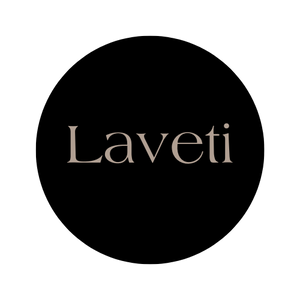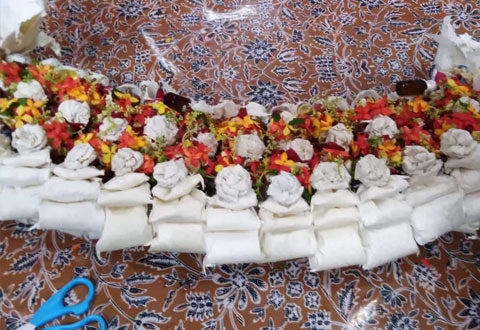VEITABANI - Fijian Traditional Relationships
Source: Simione Sevudredre
Fiji is divided into 14 provinces today. These provinces were created during Fiji’s colonial history (from 1874 – 1970). Prior the redrawing of provincial boundaries, old Viti comprised many independent vanua or chiefdoms. There were various levels of hierarchy among the chiefdoms where one chief of a chiefdom may play a subservient role to another chiefdom somewhere else. Villages also of olden Viti were located in strategic locations like hill tops, mountain passes and river estuaries because of constant warring. The names of most clans and villages in Fiji today are in fact a crossing over of these old names to their current locations.
As clans and chiefdoms grew, responsibilities and oaths between chiefdoms also evolved. Likewise, rivalry grew between independent chiefdoms and other chiefdoms of similar status serving the same overlord of another independent chiefdom. These roles are generally to do with chiefdoms who belonged to the ruling chiefly class and those that belong to the warrior class. There are also chiefdoms whose founding ancestors were opposite sex siblings and over time the banter between these two chiefdoms evolved from the usual banter relationship between cross cousins (children of a male parent versus children of a female sibling of the other male parent).
Traditional banter or rivalry has also stemmed out of two totally unrelated ancestral heroes or spirits (vu) of old who tried to outwit, subdue or outdo the other in some way – the outwitting and the banter setting the template for the descendants of the two ancestors. This banter/joking relationship between people of different chiefdoms is called “tabana” or “veitabani[1]”.
To illustrate I retell a few examples from some chiefdoms in Fiji. On the island of Ovalau, site of a UNESCO World Heritage Site, two ancient chiefdoms are situated next to each other. These are the chiefdoms of Bureta and Lovoni. The former is located near the sea, the latter are mountain people. Each chiefdom was founded by a different ancestral god (vu). Their independence and equality in rank is expressed through the veitabani or banter relationship where one calls the other bati sore (seed tooth) and the other responds by saying bati dogo (swamp tooth).
On mainland southeast Vitilevu in today’s southern Tailevu province are the districts called Nakelo and Tokatoka located on opposite sides of the same river. Though they come under same province, in the old hierarchy prior to the drawing up of provinces, Nakelo and Tokatoka were independent warrior chiefdoms. The two chiefdoms were powerful warrior states and overlord chiefs constantly sought their allegiances which constantly changed. Their warrior rivalry has evolved to become the banter of veitabani where one chiefdom calls the other bati kalavo (rat tooth) and the other responds by saying bati balei (snake tooth). This veitabani plays out mostly via witty exchanges, sarcasm, remarks and even practical jokes. To the outsider it may border on downright verbal abuse or rudeness but to its people it is tolerated all in the name of the veitabani relationship.
On Fiji’s second mainland Vanualevu are three provinces – Cakaudrove, Bua and Macuata. Prior to the current Macuata province, the old Macuata was initially a small island where the old kings of Macuata once lived. On the highest point of the island was said to live the ancestor god called Racinacina. One day Racinacina crossed over to Vuya in today’s Bua province and had an affair with its ancestral goddess. From this illicit relationship emerged the veitabani relationship between the people of Macuataiwai and Vuya in Bua. Their veitabani relationship to an outsider may seem lewd and even offensive for it ranges from verbal to practical jokes. But to them, it is the norm and tolerated all in the name of banter.
In today’s Rewa province on southeastern Vitilevu are two districts – Dreketi and Noco. Prior to them becoming a province, they were known by the old chiefdom names as Bureonoco and Navuniyavu. Within Bureonoco is the Naivileweni clan in Nacuru village and in Navuniyavu is Nadoria village. There is an old story about two ancestors – a matriarch called Damu and her grandson Ravula and an unknown ancestor from Nacuru village. This is a story of trickery and mischief regarding the supposed trapping of the moon just as she was about to rise one evening. The hatched plan botched when the moon escaped from the trap due to a misunderstanding between the ancestor from Nacuru and the goddess from Nadoria. The latter then hurled objects towards the former in a fit of anger yelling ‘kemu sivaro luveni maliwa i tamamu’ (take your grated starch parcel you son of your father’s loins). Today the people of Nadoria in the Dreketi district extend the same phrase (maliwa) towards the people of Nacuru in the Noco district – two independent neighboring chiefdoms located next to each other. The veitabani relationship between these two is mostly confined to verbal banter and joking all in good fun.
During the warring days when the kingdom of Bau at the coast of eastern Vitilevu was still in its infancy, there were two ancient kingdoms flanking it – Verata and Rewa. Oral traditions hold that Verata was a very ancient kingdom from which many chiefdoms throughout Fiji emerged from, one of which is the kingdom of Rewa. Bau was an upstart who had to fight its way to become a kingdom of its own. It gradually obtained this through its own Machiavellian intrigue called ‘vere vakaBau’ which was mostly through acts of war. Such was the intensity and ferocity of warfare and rivalry over supremacy that it became another form of veitabani. Rewa and Verata being kindred kingdoms both became traditional rivals of Bau. To this day, even though Verata and Bau are now in the same province, they still address each other as ‘naita’, an abbreviated form of ‘naitabani’ which has become a form of verbal banter and a contest of witty remarks and even sarcasm. Verata and Rewa still acknowledge their ancient kindred connection and address each other as ‘mataqali’, a code which is imbued with deep respect and camaraderie.
[1] Gatty, R., Fijian-English Dictionary: “taba-na 1. n. branch or limb (tree), wing (bird), upper arm (person), branch or “side” (of a family, as in the “woman’s side” versus the “man’s side” in a marriage). Two kin-groups that are veitabani are in a fiercely competitive but friendly relationship. The relationship is traditionally said to be that the ancestral spirits (vu) of the two groups are related as cross-cousins veitavaleni. They may take extraordinary privileges with each other, friendly but forceful insults and even indecency. The people may refer to each other as naita.
Fig.1 Map of Ovalau showing Bureta and Lovoni

Fig. 2 Map of east Vitilevu showing Nakelo and Tokatoka

Fig. 3 Map of Macuata Island showing Vanualevu obscured far right

Fig. 4 Wildlife Conservation Society Map of Bua province Vanualevu showing Vuya

Fig.5 Map of Fiji showing Noco District at the south eastern part of Vitilevu



